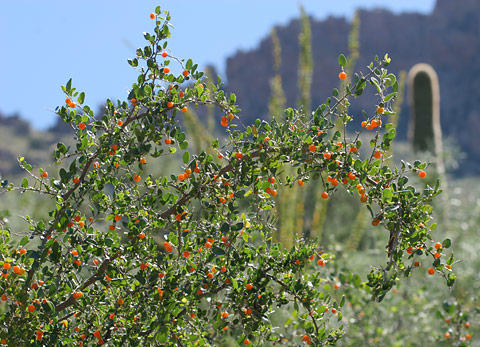Desert Hackberry – The Winter Underdog. This is the first in a three-part series on plants for birds, presented by Arizona Audubon.
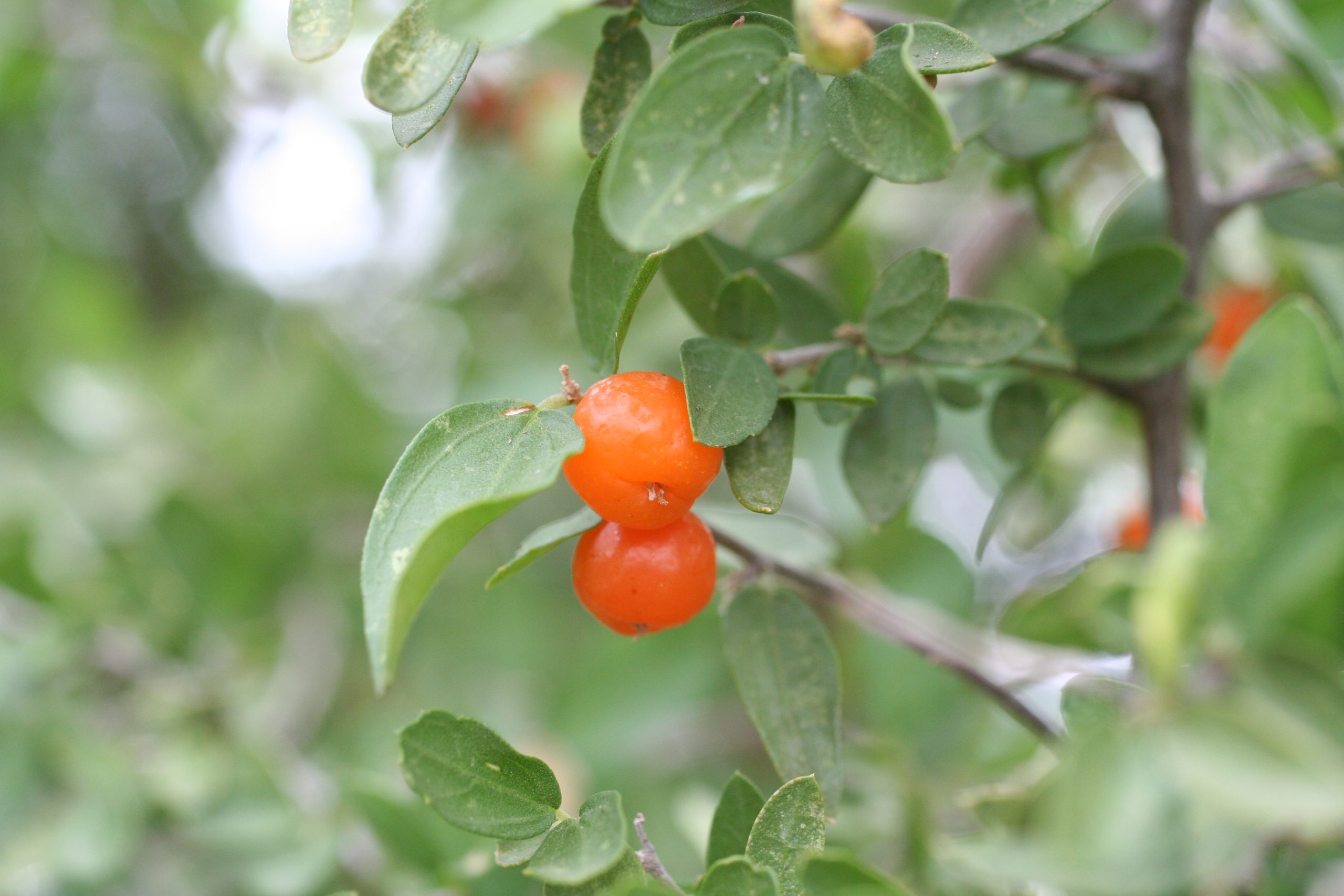
Short winter days can mean lackluster landscapes: sober yards comprised of cheerless greys and browns. Occasional bird visitors to such spaces can be observed listlessly searching for springs’ first green gifts or insect morsels. Sound familiar? To shake free of this seasonal gloom, consider adding Desert Hackberry (Celtis pallida) to the mix! Unlike his cousin, Netleaf Hackberry (Celtis reticulata), Desert Hackberry keeps its leaves all winter, thereby providing a reliable screen throughout the seasons. In addition, the small, light-colored flowers that begin to appear in March and April soon give way to delightful reddish-orange berries—edible to both birds and people. The berries ripen from July to December, depending upon rainfall, and can stay on the shrub for months like tiny ornaments if they are not eaten. The shrub itself is festooned with sharp thorns that can grow to 2 cm and thereby provide birds with fortress-like protection from predators. In central Arizona, birds attracted to Desert Hackberry include Northern Cardinal, Abert’s Towhee, House Finch and even Phainopepla. During the winter months, Desert Hackberry’s bird guest list grows even longer as Hermit Thrush, Cedar Waxwing, and White-crowned Sparrow join resident birds in making use of the shrub’s bounty.
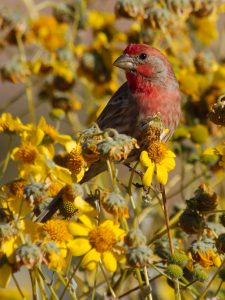
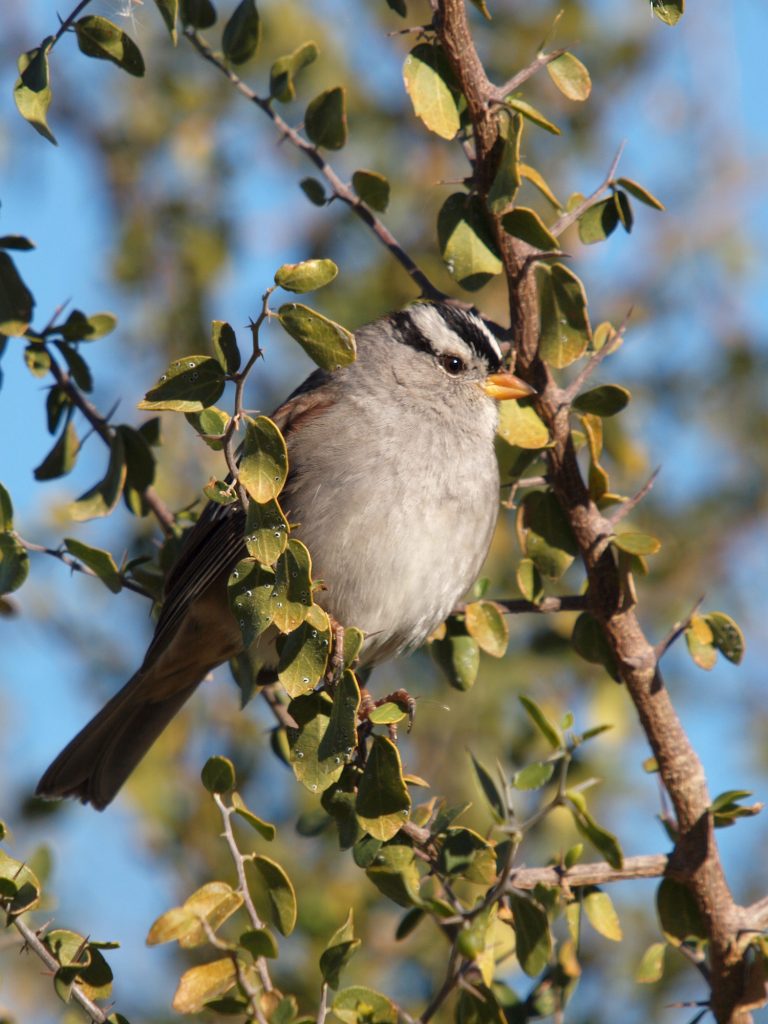
As if bird life itself is not enough entertainment, Desert Hackberry also supports a host of insect life including two interesting butterflies: Leilia Hackberry (Asterocampa leilia) and the American Snout (Libytheana bachmanii). Both species are orange as adults, but begin life as tiny green caterpillars that exactly match the Desert Hackberry’s leaves. The American Snout is known to migrate in the late summer/ fall from Sonora, and many a Phoenix gardener has been treated to a delightful surprise: a cloud of lovely orange butterflies at their Desert Hackberry when the day before, there had been none!
For all the pleasure it provides, one might expect that the Desert Hackberry would require special care but they do not. They are tolerant of nutritionally poor soil and drought and do not like shade. Perfect for Phoenix! They can get large (5.5m tall) and dense so their main requirement is space. If you have room and want to spruce up your cool season garden, give Desert Hackberry—our winter underdog—a try!
Did you know that up to 70 percent of water use is outdoors? That’s why we love desert plants and feature them each month. It’s still a great time to plant and you can learn more about native plants for birds and other plants on our Arizona Low-Water-Use Plants page. Visit our page on Choosing and Planting Low Water-Use Plants for tips on plant selection and how to plant properly. Also, be sure to read through all of our featured Plant of the Month blogs!
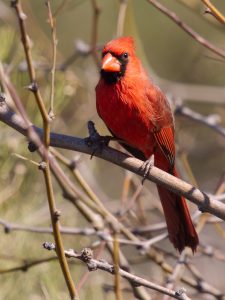
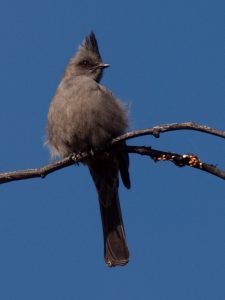
Water – Use It Wisely is proud to feature guest bloggers who write about topics related to water and water conservation. The author of this blog post, Cathy Wise, is the education director with Audubon Arizona, whose mission is to protect birds and the places they need, today and tomorrow, using science, advocacy, education, and on-the-ground conservation.


